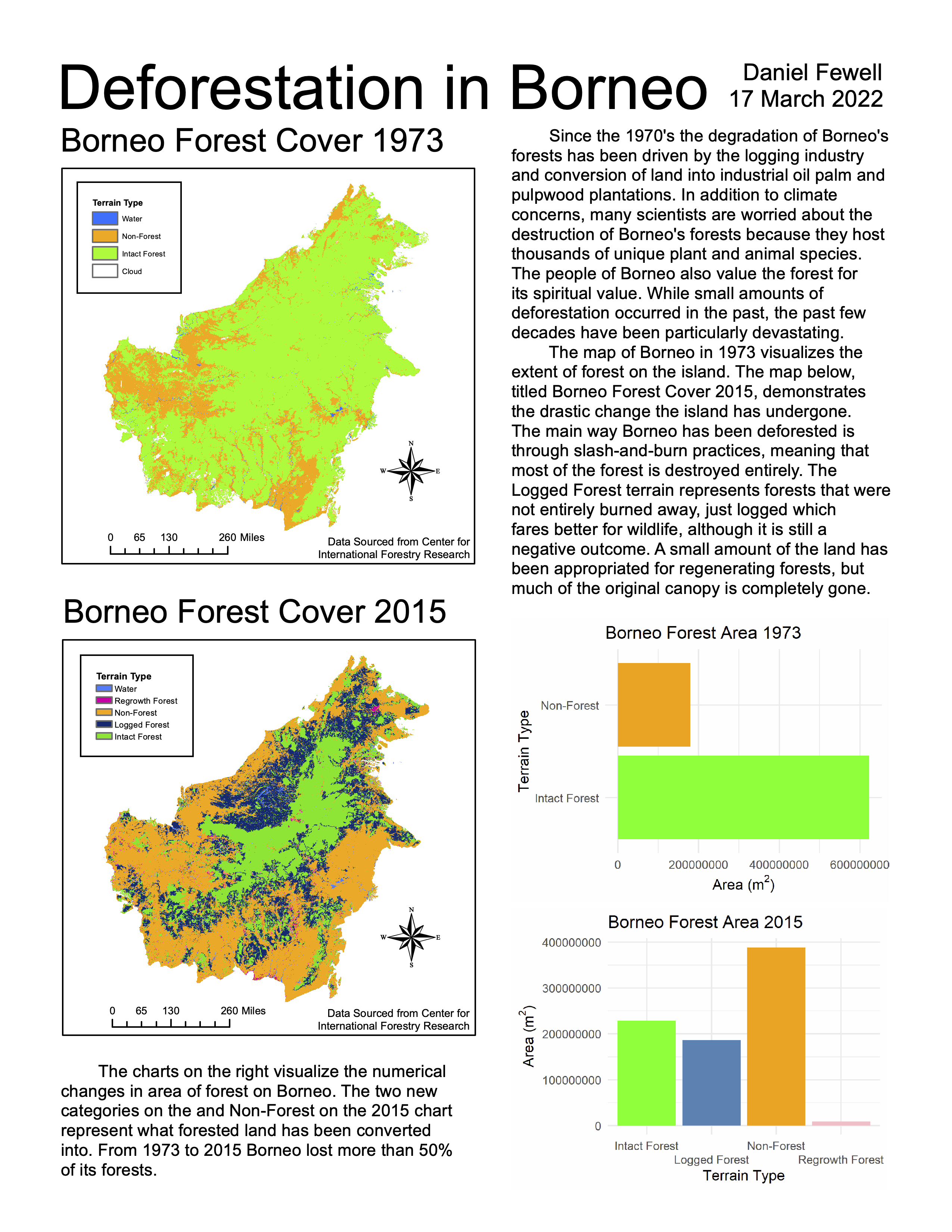Projects
Assessing the Safety of King County School Districts

This is my final project for my class on cartographic principles.
My professor challenged me to communicate a geographic
phenomenon using geographic information systems. The goal of this project
was to 1) Develop a clear geographic question, 2) Utilize GIS in order
to conduct a geographic assessment based on my particular geographic
question, 3) Clearly communicate the significance of my geographic
assessment through the visual medium of a scientific poster. A large portion
of the rubric focused on cartography, cartographic elements, visual professionalism,
and creativity. I was also graded on data ethics and methodology.
If I were to recreate this assignment, I would change the considered variables to
features about the schools such as: number of school shootings, proportion
of students who report bullying, and number of on-campus crimes, etc.
Visual Investigation: Deforestation of Borneo

In this project, I was challenged to create a one-page visual investigation
incorporating data, geospatial visualizations in the forms of maps and/or
satellite imagery, statistics, textual elements, and a write-up. I drew on
the skills I learned in both ArcMap and R to design an engaging
presentation, which transformed data into information.
If I were to recreate
this project, I would orient the axes of the charts in the same direction and
round the numbers (i.e. writing 1, 2, 3, 4 along the axis) then add "in
millions" on the axis label. I would also remove the spelling / grammar
error in the block of text at the bottom of the page.
Classified LiDAR Pre/Post-Flood Terrain Change Model
This is where I will write a bit about the project.
Spam Detection with Naive Bayes
This is where I will write a bit about the project.
Geoprocessing with Geodatabases
Note that prior to this creating this script, I utilized PostgreSQL and PostGIS in the JupyterHub terminal to create the database and set up user access for this project.
King County COVID-19 Atlas
Maps produced in Tableau.